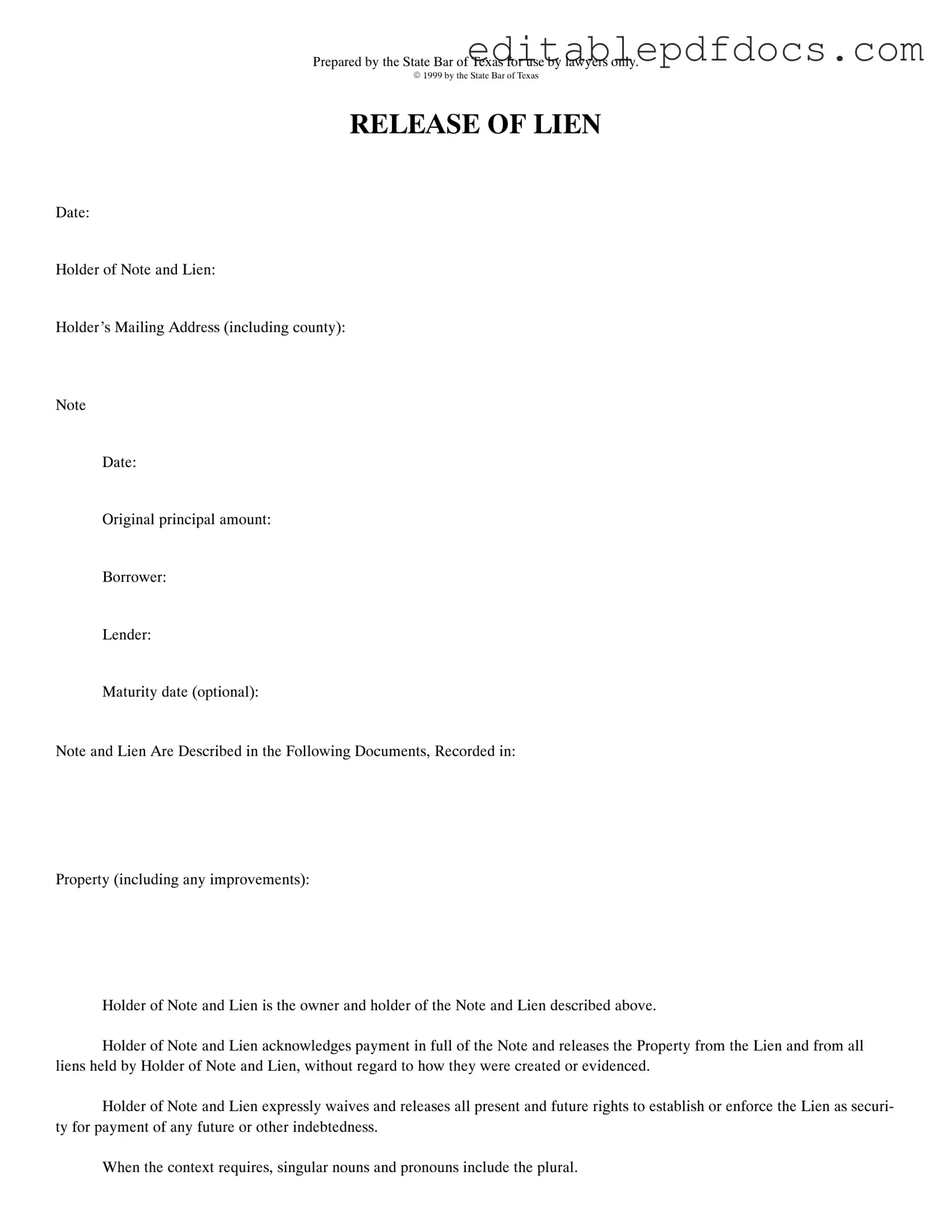The Release of Lien Texas form is a crucial document in the process of clearing a property from any liens, ensuring that the property owner can enjoy clear title. This form is specifically designed for use by attorneys and is prepared by the State Bar of Texas. It includes essential details such as the date of the release, the holder of the note and lien, and the mailing address of the holder, which must include the county. The form also captures the original principal amount, the names of the borrower and lender, and the maturity date, if applicable. Additionally, it outlines the specific documents that describe the note and lien, as well as the property involved, including any improvements made. By signing this form, the holder of the note acknowledges that they have received full payment and are formally releasing the property from the lien, relinquishing all rights to enforce it for any future debts. The acknowledgment section requires notarization, ensuring that the release is legally binding and properly documented. This form not only facilitates the transfer of property rights but also provides peace of mind to property owners, confirming that their financial obligations have been satisfied.
